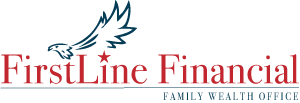As many baby boomers near retirement, some new facts are coming into focus. According to the latest Government Accountability Office (GAO) report on retirement security, 29 percent of households aged 55 and older have no savings set aside for retirement and no pension. If that doesn’t change, they’ll be relying solely on Social Security during retirement. In 2019, the average annual Social Security benefit is about $17,500 — not much above the federal poverty level of $12,490 for a single person.1
In a recent hearing, the House Ways and Means Committee invited experts to testify on the issue. Here’s what they learned:2
- Many union-sponsored multi-employer pension plans face dire funding challenges.
- The average Social Security benefit is not enough to sustain women, people of color and others who are disadvantaged in the workplace and have lower participation and savings rates in employer-sponsored retirement plans.
- Enabling universal access to a retirement savings plan via employer payroll deductions can help broaden coverage.
- Permitting a universal savings plan to include guaranteed income for life can help protect retirees from outliving their savings.
One new piece of retirement legislation winding its way through Congress is called the SECURE Act. The bill calls for a number of changes to retirement accounts, such as eliminating the age limit on IRA contributions, delaying required minimum distributions to age 72, and curtailing stretch IRAs, requiring non-spouse beneficiaries to take distributions on inherited IRAs more quickly.3
As always, if you’re looking to create or review your own retirement plan, we’re here to help. Please contact us to discuss your unique situation and how we can design a specific plan of action that helps you work toward your financial independence.
According to the Plan Sponsor Council of America (PSCA), employers are contributing more than ever to 401(k) plans. In 2017, they pitched in an average of 5.1 percent of employee income to 401(k) accounts — the highest percentage ever recorded. To their credit, workers contributed an average of 7.1 percent on their own. Another new trend is that more plan sponsors are adding a Roth IRA option, now available with at least 70 percent of all plans.4
The CFA Institute recently published a survey of investors with investable assets of more than $1 million. The study found that younger high-net-worth investors are more than twice as likely to seek a holistic approach to wealth management than their older counterparts. By the way, “holistic” doesn’t mean “generalist.” Instead, it refers to comprehensive management, utilizing strategic partnerships with other professionals when necessary in certain scenarios. Also, higher-net-worth investors are less enchanted with environmental, social and governance investment opportunities and more concerned with traditional assets. Their investment priorities continue to be minimizing taxation (50 percent) and diversifying across asset classes and industry sectors.5
If you’re struggling to estimate your retirement lifestyle needs, consider this mental exercise: Think about a specific day in the future. If you aren’t able to envision a day very far away, you may need to push a little further. How well you are able to envision life in the future — referred to as your “mental time horizon” — can have a significant impact on your financial health. Not only in terms of investing for growth, but also your ability to manage cash, debt and develop prudent savings behaviors. According to Morningstar, a person with a long-term mental time horizon tends to save 20 times more than those without.6
Content prepared by Kara Stefan Communications.
1 Nir Kaissar. Bloomberg. April 10, 2019. “Employers Can Buy Retirement Security for $2.64 an Hour.” https://www.bloomberg.com/opinion/articles/2019-04-10/employers-can-buy-retirement-security-for-2-64-an-hour. Accessed April 15, 2019.
2 Jon Vogler. Invesco. March 15, 2019. “Is a retirement savings crisis on the horizon?” https://www.blog.invesco.us.com/is-a-retirement-savings-crisis-on-the-horizon/. Accessed April 15, 2019.
3 Michael Kitces. Nerd’s Eye View. April 5, 2019. “Weekend Reading for Financial Planners.” https://www.kitces.com/blog/weekend-reading-for-financial-planners-apr-6-7-2/. Accessed April 15, 2019.
4 Jon Vogler. Invesco. Feb. 27, 2019. “Employer 401(k) contributions hit a six-decade record.” https://www.blog.invesco.us.com/employer-401k-contributions-hit-a-six-decade-record. Accessed April 15, 2019.
5 Jacqueline Sergeant. Financial Advisor. March 19, 2019. “Wealthy Investors Need Skilled And Savvy Advisors.” https://www.fa-mag.com/news/wealthy-investors-want-skilled-and-savvy-advisors-43877.html. Accessed April 15, 2019.
6 Samantha Lamas and Sarah Newcomb. Morningstar. April 11, 2019. “What is financial health?” https://www.morningstar.com/blog/2019/04/11/financial-health.html. Accessed April 15, 2019.


